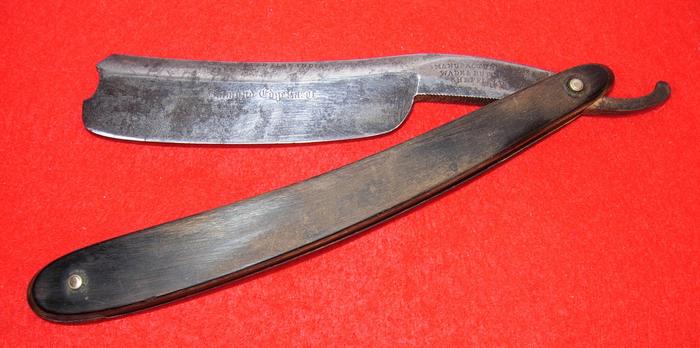Results 31 to 37 of 37
Threaded View
-
03-20-2013, 07:04 PM #1
 A Wade and Butcher not in the data base
A Wade and Butcher not in the data base
Hey guys, I picked up this little gem, and am going to have it restored. There is a wee bit of rust around the handle/pivot, but the blade its self is in great shape. Only grey patina. It also looks as if it hardly ever seen a hone!
I found the data base, but this one isn't listed. Any help or history would be appreciated.
Bear


On the blade face it says "Diamond Edge Razor" Above that on the spine it says "CELEBRATED FINE INDIA...) the next line on the spine says (steel...) the rest of the stamp is missing.
Tang stamp says
"MANUFACTURED BY"
"WADE & BUTCHER"
"SHEFFIELD"Last edited by PierreR; 03-20-2013 at 07:11 PM.
My friends call me Bear.


 21Likes
21Likes LinkBack URL
LinkBack URL About LinkBacks
About LinkBacks






 Reply With Quote
Reply With Quote